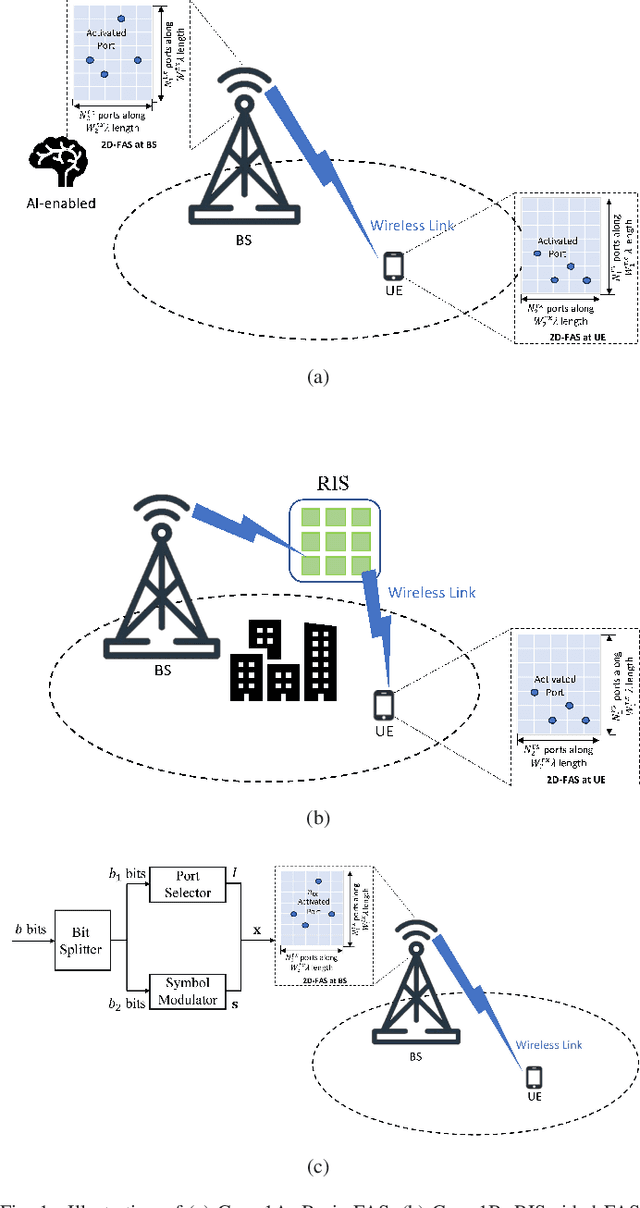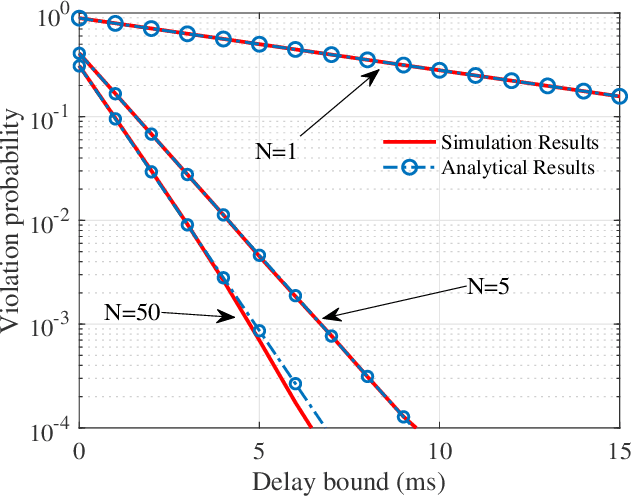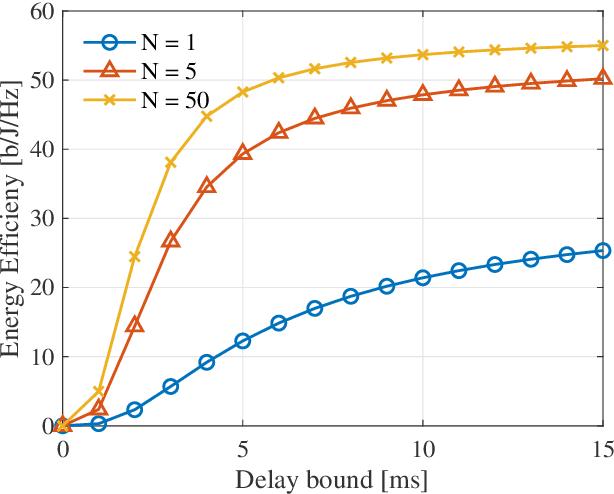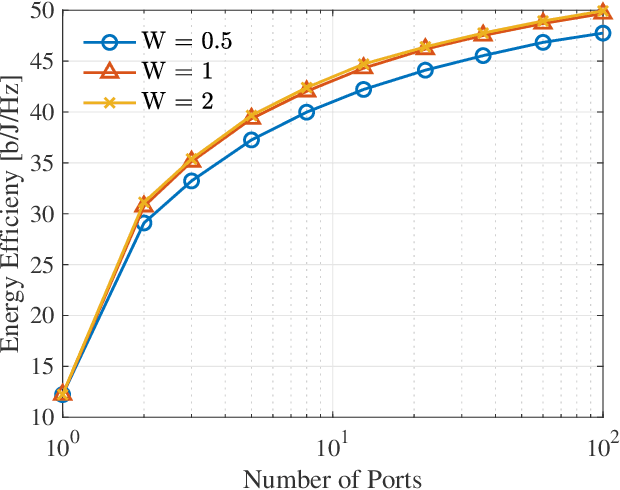Chan-Byoung Chae
Accelerating vRAN and O-RAN with SIMD: Architectural Perspectives and Performance Evaluation
Oct 09, 2025



Abstract:The evolution of radio access networks (RANs) toward virtualization and openness creates new opportunities for flexible, cost-effective, and high-performance deployments. Achieving real-time and energy-efficient baseband processing on commercial off-the-shelf platforms, however, remains a critical challenge. This article explores how single instruction multiple data (SIMD) architectures can accelerate RAN workloads. We first outline why key physical-layer functions, such as channel estimation, multiple-input multiple-output (MIMO) detection, and forward error correction, are well aligned with SIMD's data-level parallelism. We then present practical design guidelines and prototype results, showing significant improvements in throughput and energy efficiency compared to conventional CPU-only processing, while retaining programmability and ease of integration. Finally, we discuss open challenges in workload balancing and hardware heterogeneity, and highlight the role of SIMD as an enabling technology for flexible, efficient, and sustainable 6G-ready RANs.
Secure ISAC with Fluid Antenna Systems: Joint Precoding and Port Selection
Sep 30, 2025Abstract:This paper presents a novel framework for enhancing physical-layer security in integrated sensing and communication (ISAC) systems by leveraging the reconfigurability of fluid antenna systems (FAS). We propose a joint precoding and port selection (JPPS) strategy that maximizes the sum secrecy rate while simultaneously ensuring reliable radar sensing. The problem is formulated using fractional programming (FP) and solved through an iterative algorithm that integrates FP transformations with successive convex approximation (SCA). To reduce computational complexity, we further develop low-complexity schemes based on zero-forcing (ZF) precoding, combined with greedy port selection and trace-inverse minimization. Simulation results demonstrate substantial improvements in both secrecy performance and sensing accuracy compared to conventional baselines, across a wide range of FAS ports, user loads, and sensing targets. These findings highlight the critical importance of FAS geometry optimization in enabling secure and efficient joint communication-sensing for next-generation wireless networks.
FAS-ARIS: Turning Multipath Challenges Into Localization Opportunities
Sep 15, 2025Abstract:Traditional single-input single-output (SISO) systems face fundamental limitations in achieving accurate three-dimensional (3D) localization due to limited spatial degrees of freedom (DoF) and the adverse impact of multipath propagation. This paper proposes a novel fluid antenna system (FAS)-active reconfigurable intelligent surface (ARIS) framework that transforms multipath effects from a hindrance into a resource for enhanced localization. By synergistically combining the signal amplification capabilities of ARIS with the spatial diversity enabled by FAS, the proposed system achieves robust 3D user equipment (UE) positioning -- without relying on auxiliary information such as time-of-arrival (ToA) or frequency diversity. The system exploits both line-of-sight (LoS) and non-line-of-sight (NLoS) components through a tailored signal decoupling strategy. We design novel UE pilot sequences and ARIS phase configurations to effectively separate LoS and NLoS channels, enabling independent parameter estimation. A multi-stage estimation algorithm is then applied: the multiple signal classification (MUSIC) algorithm estimates angle-of-arrival (AoA) from the direct path, while maximum likelihood estimation with interior-point refinement recovers cascaded channel parameters from the reflected path. Finally, geometric triangulation using least-squares estimation determines the UE's 3D position based on the extracted AoA information. Comprehensive performance analysis, including the derivation of Cram\'{e}r-Rao bounds for both channel and position estimation, establishes theoretical benchmarks. Simulation results confirm that the proposed FAS-ARIS framework achieves near-optimal localization accuracy while maintaining robustness in rich multipath environments -- effectively turning conventional localization challenges into advantages.
Node Position Estimation in Diffusion-Based Molecular Communications Using Multi-Layer Perceptron
Sep 09, 2025Abstract:This paper proposes a method for accurately estimating the relative position between two nodes with unknown locations in a diffusion-based molecular communication environment. A specialized node structure is designed, combining a central absorbing receiver with multiple transmitters placed at predefined spherical coordinates. Pilot molecules are released, and their absorption time and concentration are measured. By partitioning the spherical coordinate space, these spatially distinct measurements serve as input to a multilayer perceptron (MLP)-based model. The proposed method significantly improves the precision of distance and direction estimation. Simulation results demonstrate localization accuracy, confirming the effectiveness of the neural network model in capturing the underlying physical characteristics.
Near-Field Challenges in Ultra-Wideband ISAC: Beamforming Strategies and System Insights
Aug 26, 2025Abstract:The shift toward sixth-generation (6G) wireless networks places integrated sensing and communications (ISAC) at the core of future applications such as autonomous driving, extended reality, and smart manufacturing. However, the combination of large antenna arrays and ultra-wide bandwidths brings near-field propagation effects and beam squint to the forefront, fundamentally challenging traditional far-field designs. True time delay units (TTDs) offer a potential solution, but their cost and hardware complexity limit scalability. In this article, we present practical beamforming strategies for near-field ultra-wideband ISAC systems. We explore codebook designs across analog and digital domains that mitigate beam squint, ensure reliable user coverage, and enhance sensing accuracy. We further validate these approaches through large-scale system-level simulations, including 3D map-based evaluations that reflect real-world urban environments. Our results demonstrate how carefully designed beamforming can balance communication throughput with sensing performance, achieving reliable coverage and efficient resource use even under severe near-field conditions. We conclude by highlighting open challenges in hardware, algorithms, and system integration, pointing toward research directions that will shape the deployment of 6G-ready ISAC networks.
A Contemporary Survey on Fluid Antenna Systems: Fundamentals and Networking Perspectives
Jun 16, 2025



Abstract:The explosive growth of teletraffic, fueled by the convergence of cyber-physical systems and data-intensive applications, such as the Internet of Things (IoT), autonomous systems, and immersive communications, demands a multidisciplinary suite of innovative solutions across the physical and network layers. Fluid antenna systems (FAS) represent a transformative advancement in antenna design, offering enhanced spatial degrees of freedom through dynamic reconfigurability. By exploiting spatial flexibility, FAS can adapt to varying channel conditions and optimize wireless performance, making it a highly promising candidate for next-generation communication networks. This paper provides a comprehensive survey of the state of the art in FAS research. We begin by examining key application scenarios in which FAS offers significant advantages. We then present the fundamental principles of FAS, covering channel measurement and modeling, single-user configurations, and the multi-user fluid antenna multiple access (FAMA) framework. Following this, we delve into key network-layer techniques such as quality-of-service (QoS) provisioning, power allocation, and content placement strategies. We conclude by identifying prevailing challenges and outlining future research directions to support the continued development of FAS in next-generation wireless networks.
Fluid Antenna-Empowered Receive Spatial Modulation
Jun 09, 2025Abstract:Fluid antenna (FA), as an emerging antenna technology, fully exploits spatial diversity. This paper integrates FA with the receive spatial modulation (RSM) scheme and proposes a novel FA-empowered RSM (FA-RSM) system. In this system, the transmitter is equipped with an FA that simultaneously activates multiple ports to transmit precoded signals. We address three key challenges in the FA-RSM system: port selection, theoretical analysis, and detection. First, for port selection, an optimal algorithm from a capacity maximization perspective are proposed, followed by two low-complexity alternatives. Second, for theoretical analysis, performance evaluation metrics are provided for port selection, which demonstrate that increasing the number of activated ports enhances system performance. Third, regarding detection, two low-complexity detectors are proposed. Simulation results confirm that the FA-RSM system significantly outperforms the conventional RSM system. The proposed low-complexity port selection algorithms facilitate minimal performance degradation. Moreover, while activating additional ports improves performance, the gain gradually saturates due to inherent spatial correlation, highlighting the importance of effective port selection in reducing system complexity and cost. Finally, both proposed detectors achieve near-optimal detection performance with low computational complexity, emphasizing the receiver-friendly nature of the FA-RSM system.
Fluid Antenna System-Assisted Self-Interference Cancellation for In-Band Full Duplex Communications
Jun 05, 2025Abstract:In-band full-duplex (IBFD) systems are expected to double the spectral efficiency compared to half-duplex systems, provided that loopback self-interference (SI) can be effectively suppressed. The inherent interference mitigation capabilities of the emerging fluid antenna system (FAS) technology make it a promising candidate for addressing the SI challenge in IBFD systems. This paper thus proposes a FAS-assisted self-interference cancellation (SIC) framework, which leverages a receiver-side FAS to dynamically select an interference-free port. Analytical results include a lower bound and an approximation of the residual SI (RSI) power, both derived for rich-scattering channels by considering the joint spatial correlation amongst the FAS ports. Simulations of RSI power and forward link rates validate the analysis, showing that the SIC performance improves with the number of FAS ports. Additionally, simulations under practical conditions, such as finite-scattering environments and wideband integrated access and backhaul (IAB) channels, reveal that the proposed approach offers superior SIC capability and significant forward rate gains over conventional IBFD SIC schemes.
Performance Analysis of Wireless Communication Systems Assisted by Fluid Reconfigurable Intelligent Surfaces
May 29, 2025Abstract:This letter investigates the performance of emerging wireless communication systems assisted by a fluid reconfigurable intelligent surface (FRIS). Unlike conventional reconfigurable intelligent surfaces (RISs), an FRIS consists of fluid-inspired metamaterials arranged in a densely packed matrix of sub-elements over a surface. It dynamically activates specific elements for signal reflection and modulation based on real-time channel conditions. Considering a downlink scenario where a base station communicates with a user terminal via a FRIS, we first characterize the statistical behavior of the equivalent end-to-end channel by deriving closed-form approximations for its cumulative distribution and probability density functions. Using these expressions, an analytical approximation for the outage probability and a tight upper bound on the ergodic capacity, including their asymptotic behaviors for high signal-to-noise ratio values, are derived. Our findings reveal key performance trends demonstrating that FRIS can substantially improve link reliability and spectral efficiency compared to conventional RISs, owing to its capability to dynamically select optimal elements from a dense preconfigured grid.
FIRES: Fluid Integrated Reflecting and Emitting Surfaces
May 19, 2025Abstract:This letter introduces the concept of fluid integrated reflecting and emitting surface (FIRES), which constitutes a new paradigm seamlessly integrating the flexibility of fluid-antenna systems (FASs) with the dual functionality of simultaneous transmitting and reflecting reconfigurable intelligent surfaces (STAR-RISs). The potential of the proposed metasurface structure is studied though an FIRES-enabled multicast system based on the energy splitting protocol. In this model, the FIRES is divided into non-overlapping subareas, each functioning as a 'fluid' element capable of concurrent reflection and transmission and changing its position of radiation within the subarea. In particular, we formulate an optimization problem for the design of the triple tunable features of the surface unit elements, which is solved via a tailored particle swarm optimization approach. Our results showcase that the proposed FIRES architecture significantly outperforms its conventional STAR-RIS counterpart.
 Add to Chrome
Add to Chrome Add to Firefox
Add to Firefox Add to Edge
Add to Edge